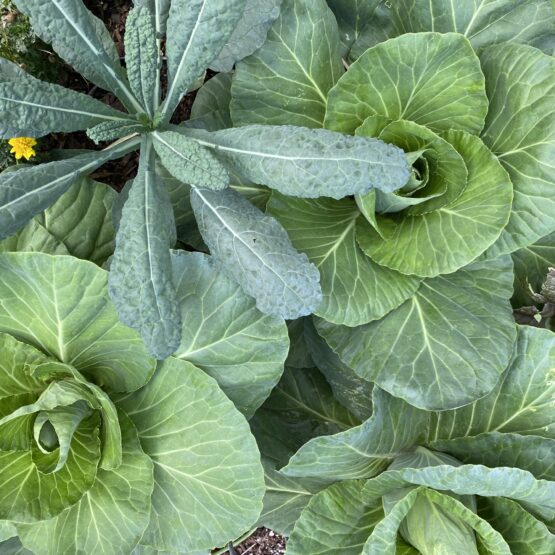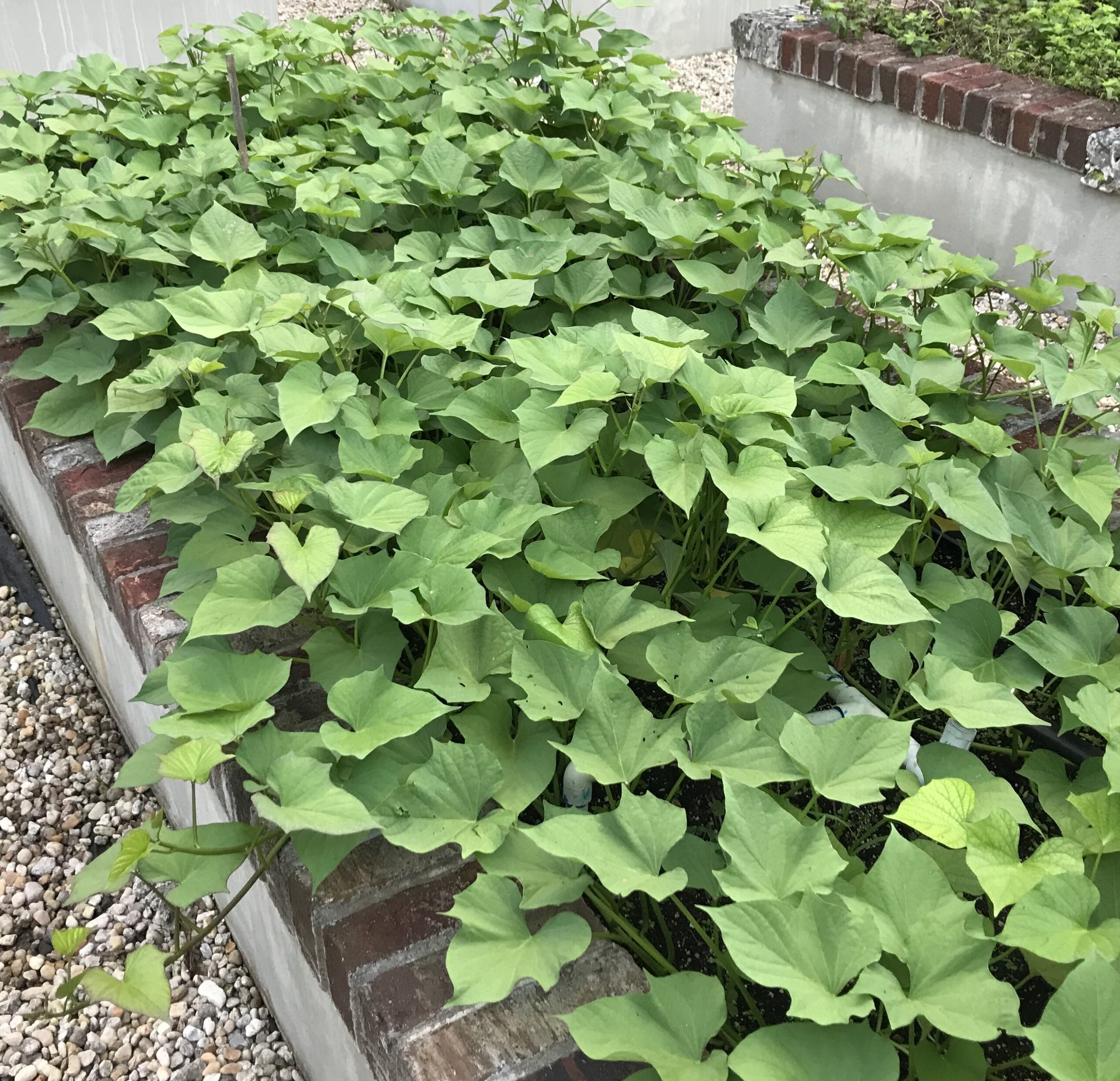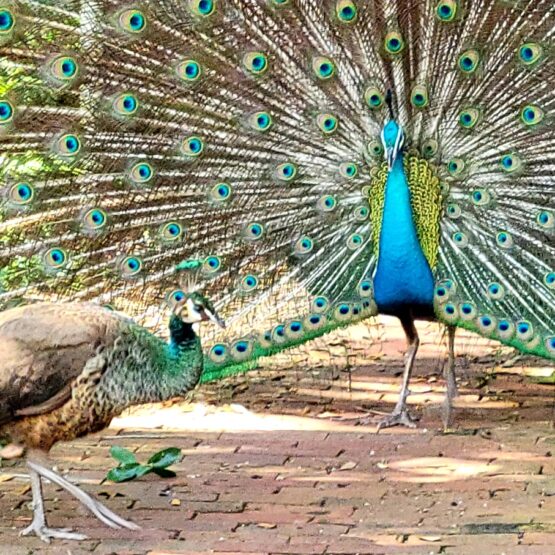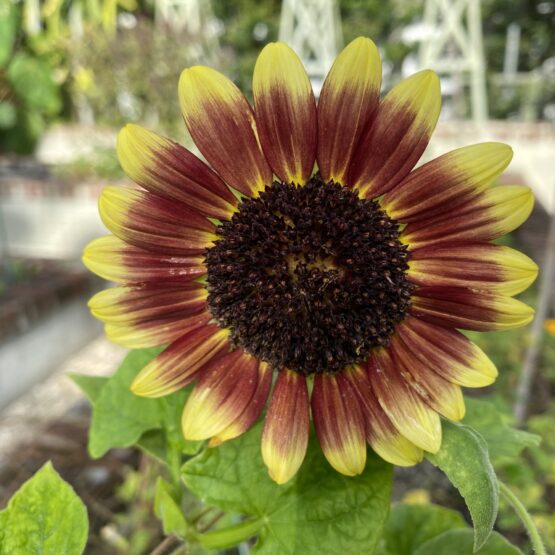We sometimes dub a growing season, especially when its harvest is peaking, as “The Year of…” – depending on what did really well that year. I remember quite vividly our Year of the Nasturtium as our garden was blanketed with their flowers in a variety of colors and the bees were quite happy to visit! Other crops in contention for the title have been kale, fennel, cabbages, green beans, and sweet potatoes – all bringing a particularly abundant and joyful harvest in a given year. Here are some key points that got the tomato this past season’s (20-21) royal title:
An earlier start than usual:
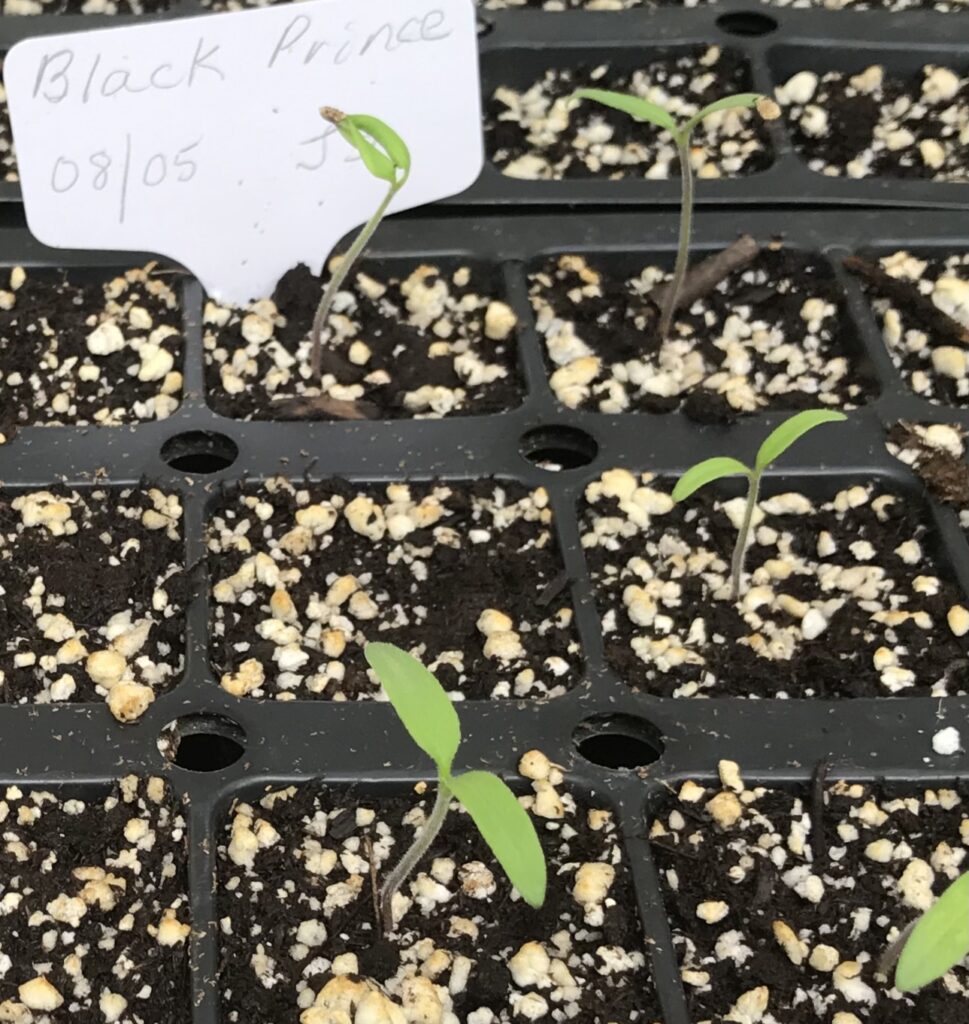
Baby sprouts!
Seeds for a variety of heirloom tomatoes were planted in flats on August 5th – we dared the blistering hot, rainy weather and they did fine. Tomatoes germinate best in very warm soil but we’d never started THAT early! They did have to be protected from too much rain, as needed, and we slowly “hardened” them into full sun. Of course we transplanted them up into 4” pots and in some cases, again into 6 inch pots while waiting for the opportune time (and readied beds) to put them in. The seedlings thrived!
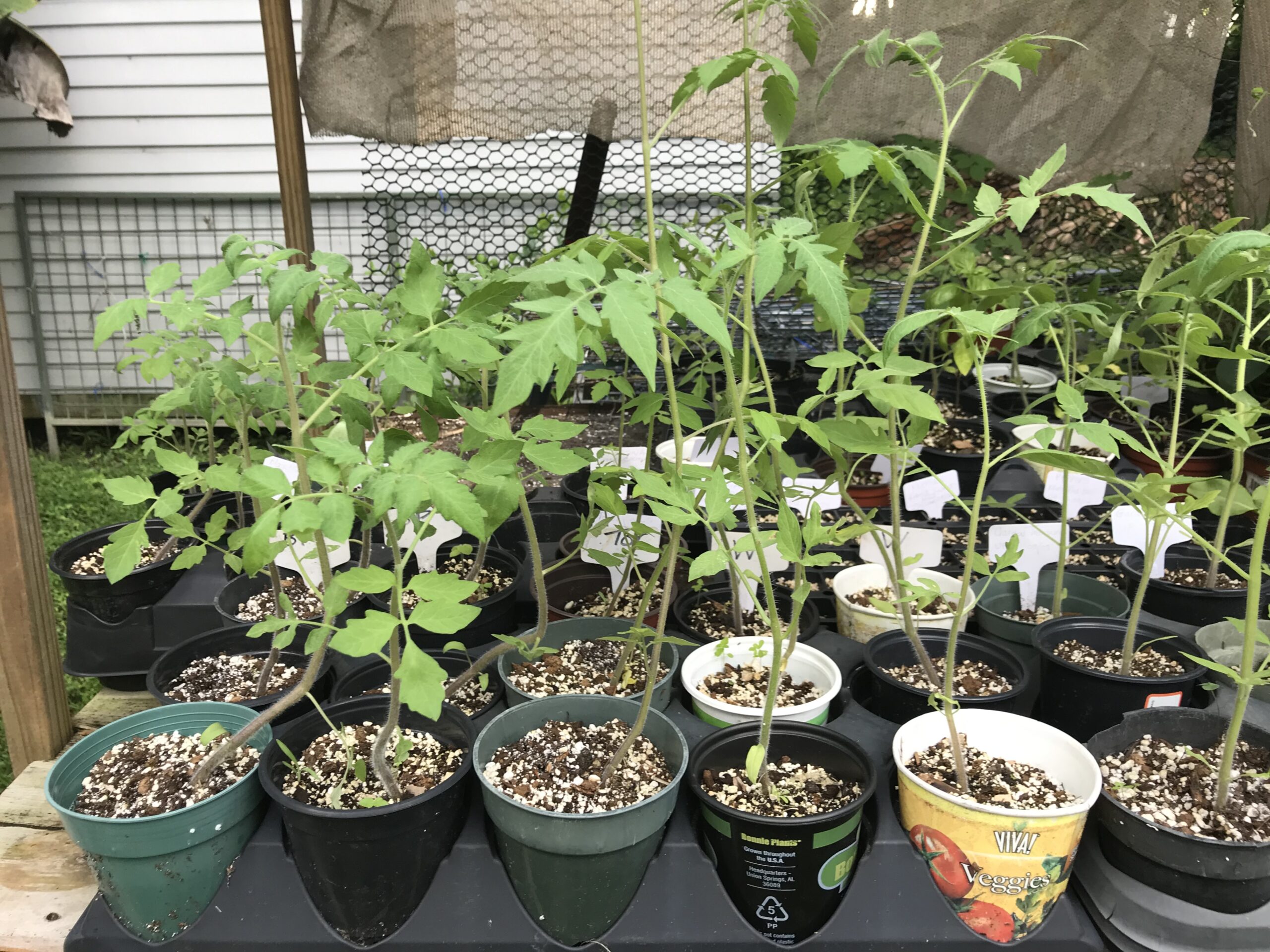
Growing fast and well!
One day we were transplanting to larger pots and a garden member suggested we try a few in the ground. It was September, earlier than we’ve ever done that due to the intense heat and typically heavy rains. Well, they did great – taking off into full beautiful plants in no time and loving being in the garden beds. A lesson for the future…
Our first crop of starter plants for the big heirloom type tomatoes typically go in the beds in early to mid-October, and more can go in as late as early January. You have to count on the fruit being able to set before warm weather hits in late Spring. Cherry tomatoes have a longer range, they can go in early and then as late as February, maybe even early March if you’re lucky.

Really, is there anything more exciting?!!
-Some special varieties:
The University of Florida conducts a research project on growing tomatoes specifically in our state (see UF Tomato Research). For a minimal donation, we received seeds for three different tomatoes (the seeds lasted through two seasons – time to reorder!). Every one of these tomatoes did exceptionally well in our south Florida climate. They were all delicious and the plants thrived and remained healthy:
- The “W” tomato (now renamed “garden ruby”) is the first determinate we’ve ever grown. and its production was prolific and lasted longer than expected.
- The “garden gem” is shaped like a roma and is semi-determinate.
- The “garden treasure” is an indeterminate red beauty, quite a producer!
For the coming season, we plan to re-up our supply of the above seeds from UF, as well as to participate in their “Citizen Science Initiative” to test out new varieties. We especially look forward to trying the cherry cultivar.
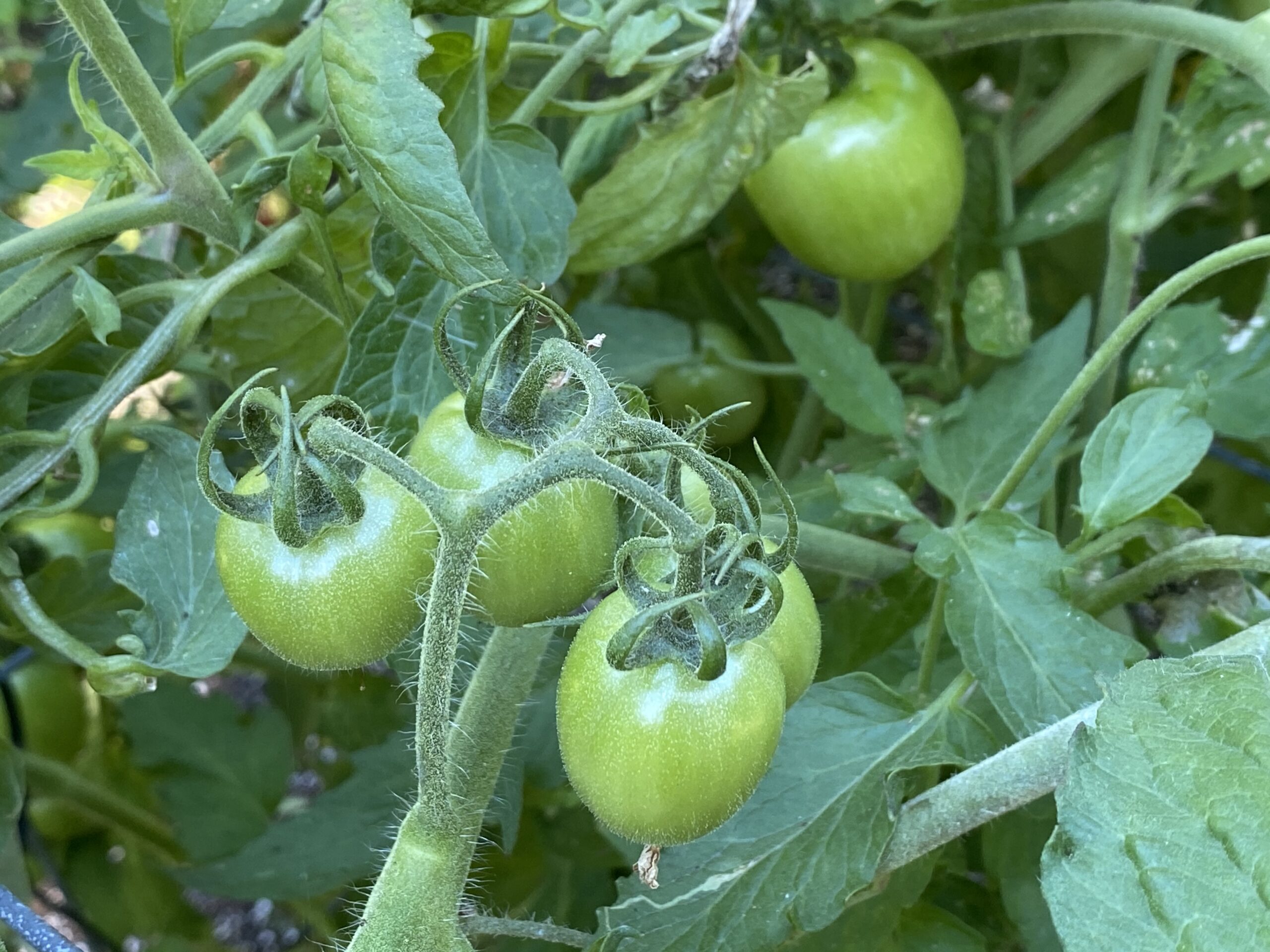
Garden gems
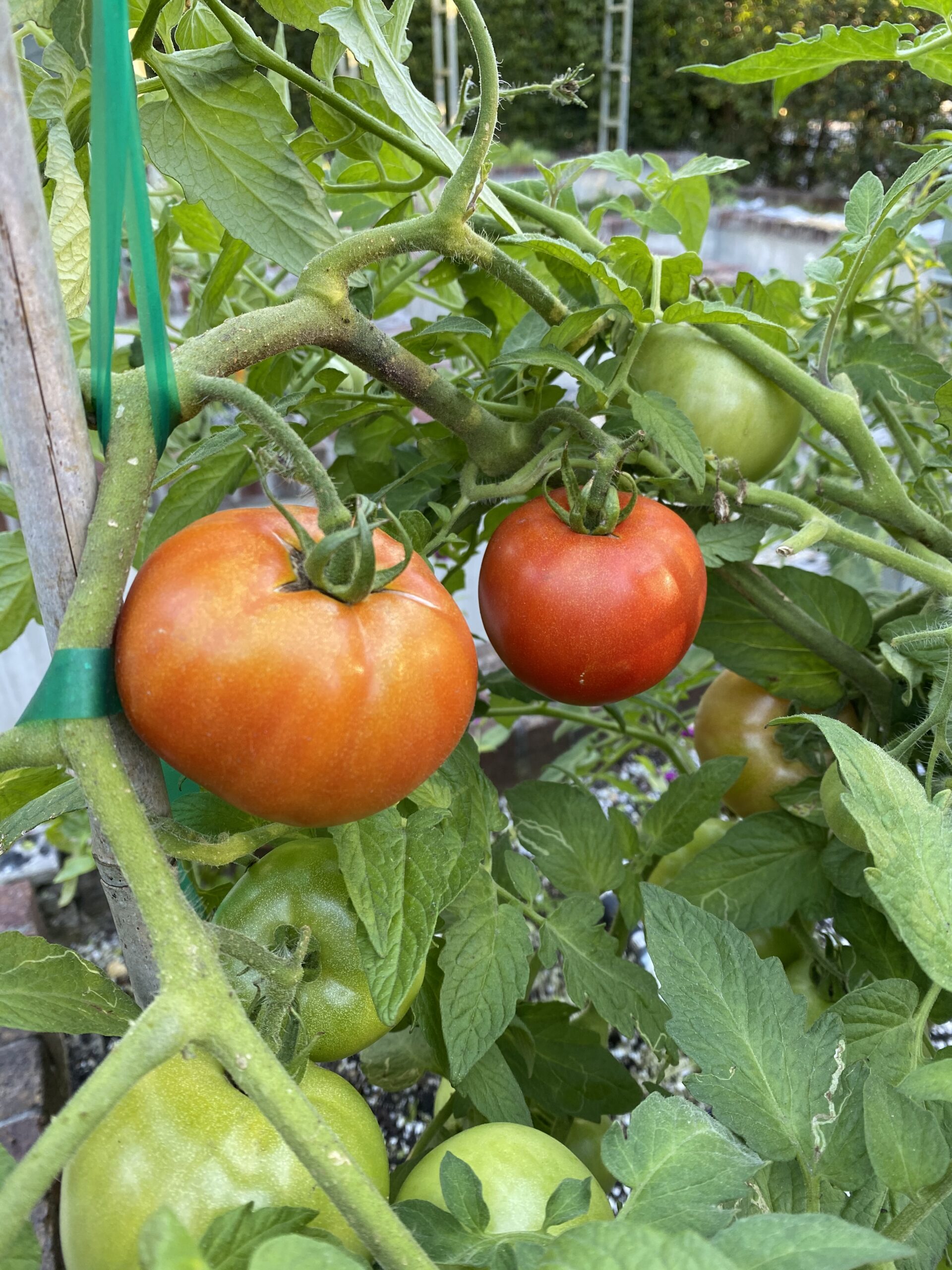
Garden treasure variety – so bountiful!
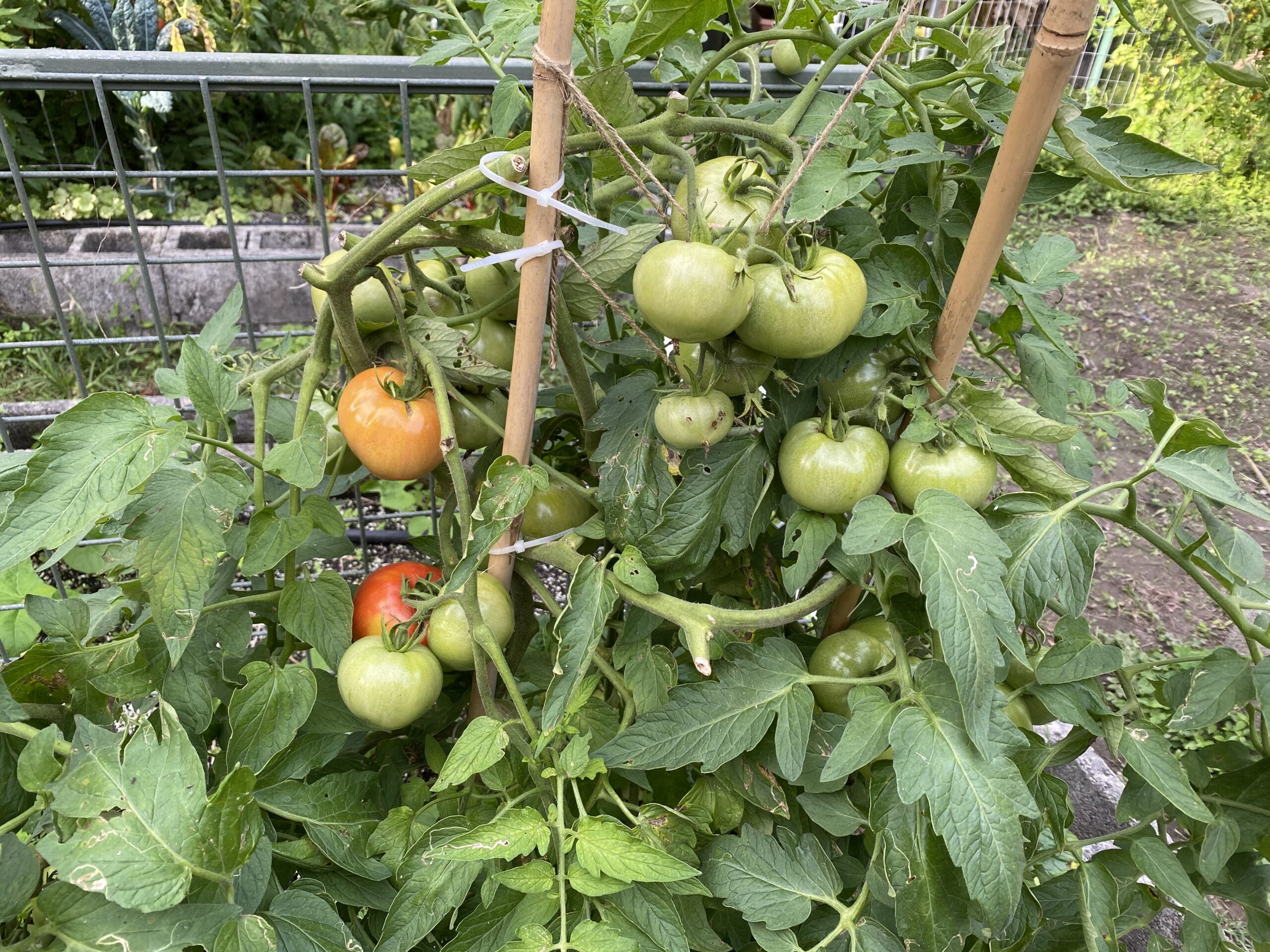
The determinate “W” tomato was not supposed to need a trellis – Oh my!
Three of our other favorites come from Johnny’s Seeds – a big, beautiful beefsteak called “Chef’s Choice Orange,” a medium sized brown tomato named “Black Prince,” and a golden-orange medium sized cherry tomato called “Toronjina.” We have grown these for the past two seasons and they are terrific. The beefsteak and cherry had a particularly prolific production.

Golden “Toronjina” cherry tomatoes from Johnny’s Seeds
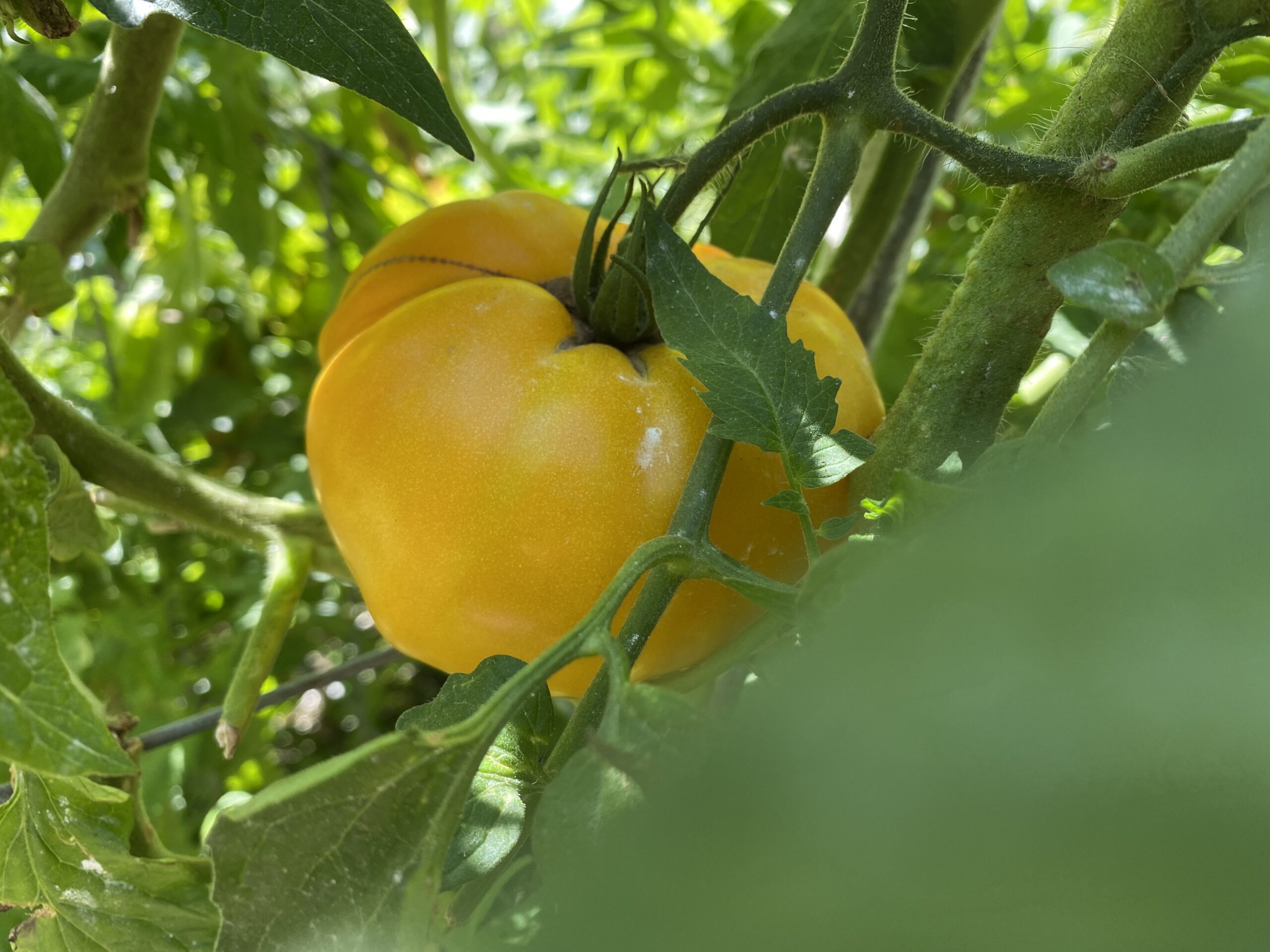
Slowly turning orange…

It’s so worth it!
The above are just a few of the tomatoes from our many years of growing and experimenting. There are plenty of varieties that gardeners have success with here. You might want to check out other South Florida gardening blogs and organic nurseries. We have also been happy over the years with seeds from Tomato Growers Supply Company – an incredible variety to choose from. Look for disease resistance categories on your choices.
It is challenging for a variety of reasons to grow tomatoes here organically – with chemicals it’s a lot easier but we don’t go there. Between the infamous nematodes so prevalent in our soil, the myriad of blights that tomatoes are susceptible to, and our increasingly erratic weather patterns, many gardeners are resorting to just growing cherry tomatoes. For the record, we’re not! It’s just too hard to give up on those big beautiful heirlooms that cost way too much in the store and taste a whole lot differently.
So growing tomatoes organically in our South Florida climate requires a lot of work and maintenance. It is a continual process to keep our mostly indeterminates tied up and managed on trellises, or staked if they are determinates. To help ensure the plants remain healthy and pest-free, we keep them pruned at an appropriate level. We do believe in the “pinching” method (not everyone does), which helps to limit unnecessary foliage growth and basically keeps our plants from becoming an overgrown and insect/disease-inviting mess. The energy and nutrients can then concentrate on fruit production. Last year we over-pruned, and that can be a problem too (e.g. causing blossom rot); the plants certainly need lots of foliage for health and growth – everything in moderation! See this informative video: How to Prune Tomato Plants.
It is important to check the tomatoes and the entire plant frequently for pests. One of the worst enemies is the tomato hornworm – they can defoliate a plant in no time, it’s really unbelievable. Not the prettiest of creatures either. We pluck and destroy when we find them; luckily they are usually solo on a plant, but they blend in so well that you can miss them right in front of you!
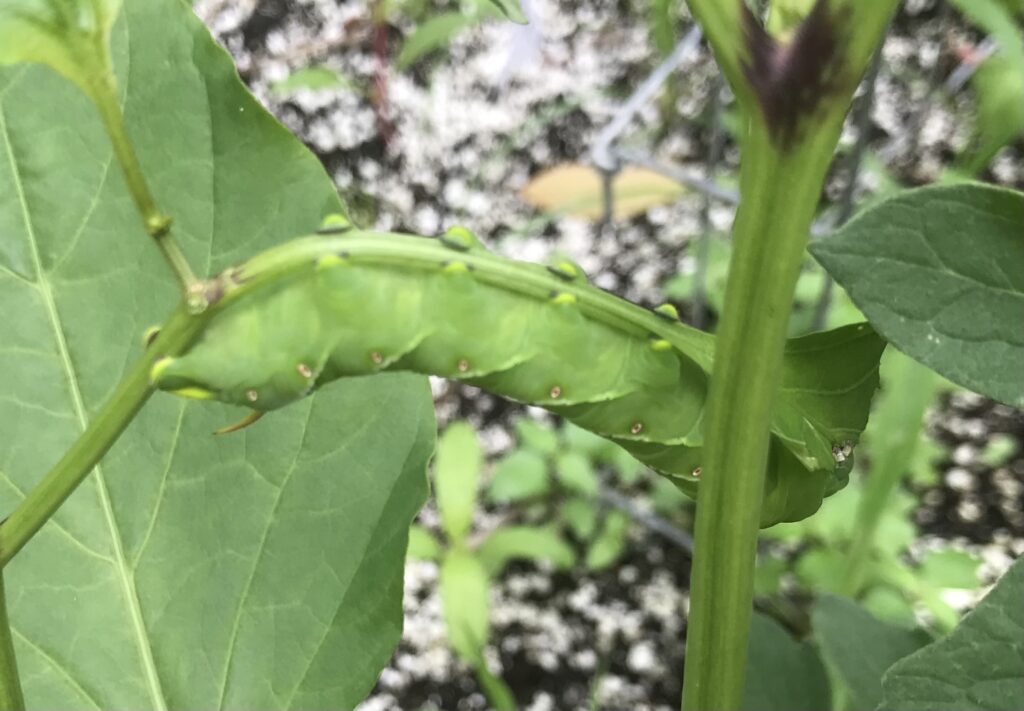
Munching away – not for long!
Planting our tomatoes at least 3 feet apart and keeping the bottoms of the plants fairly clear of foliage helps to prevent fungi and diseases. Occasionally we may dust the tomatoes with Dipel (Bacillus thuringiensis – a biological insecticide) when we get small worms attacking the fruit.
We keep our tomatoes fertilized throughout the season, starting with fertilizer in our soil mixture. We add a high nitrogen to promote foliage growth during the first several weeks after planting and then transition to a low nitrogen to promote fruit production. We use Sustane fertilizers, which are available in local organic nurseries (e.g. Tree Amigos) or at wholesale prices (for a sizable quantity) at VAS Agricultural Supply in Homestead.
As far as nematodes go, research does not show a treatment or cure for them for the home gardener. It is a myth that marigolds actually kill nematodes – they may attract them away from the tomato roots but we personally have given up on that method. South Florida gardens are very susceptible to harmful nematodes, and we usually get them wherever we grow tomatoes (and okra, by the way). That being said, we still usually have good production (unless – rarely – a particular bed is so overly infested). Our main approaches are to rotate the crops, letting a bed rest from planting tomatoes for two or three seasons. We also make a point each summer to solarize the beds we’ve just grown tomatoes in (see “Fall Bed Prep”). Then in the fall we add nutrients and composted soil to the top without digging deeply (where nematodes may still thrive) before planting different kinds of crops in the bed.
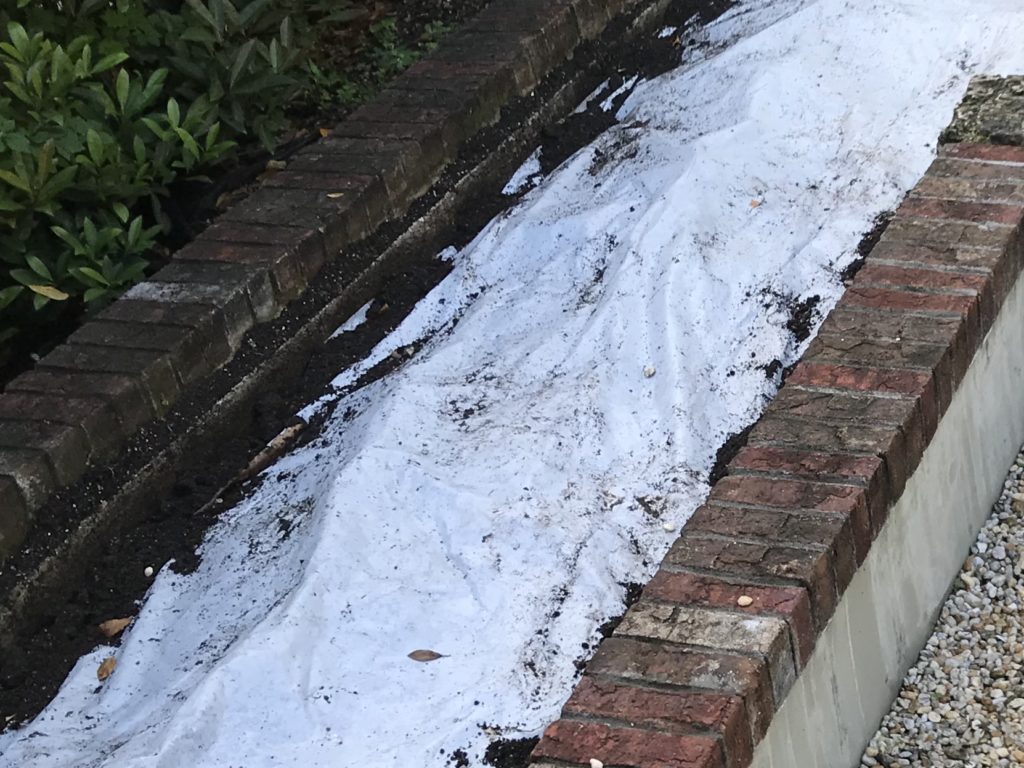
Solarized bed
One thing we learned this past season by accident is how well tomatoes can do in really dry soil. The irrigation system was performing poorly in one bed which seemed to help the tomatoes have a long and amazing production. Taking note for future plantings and care… We also had a group of fairly mature tomato plants that had to be removed from a bed that wasn’t draining. Nobody thought we could successfully transplant them, and though they looked dead the first day, they came back and thrived into one of the best crops we’ve ever had!
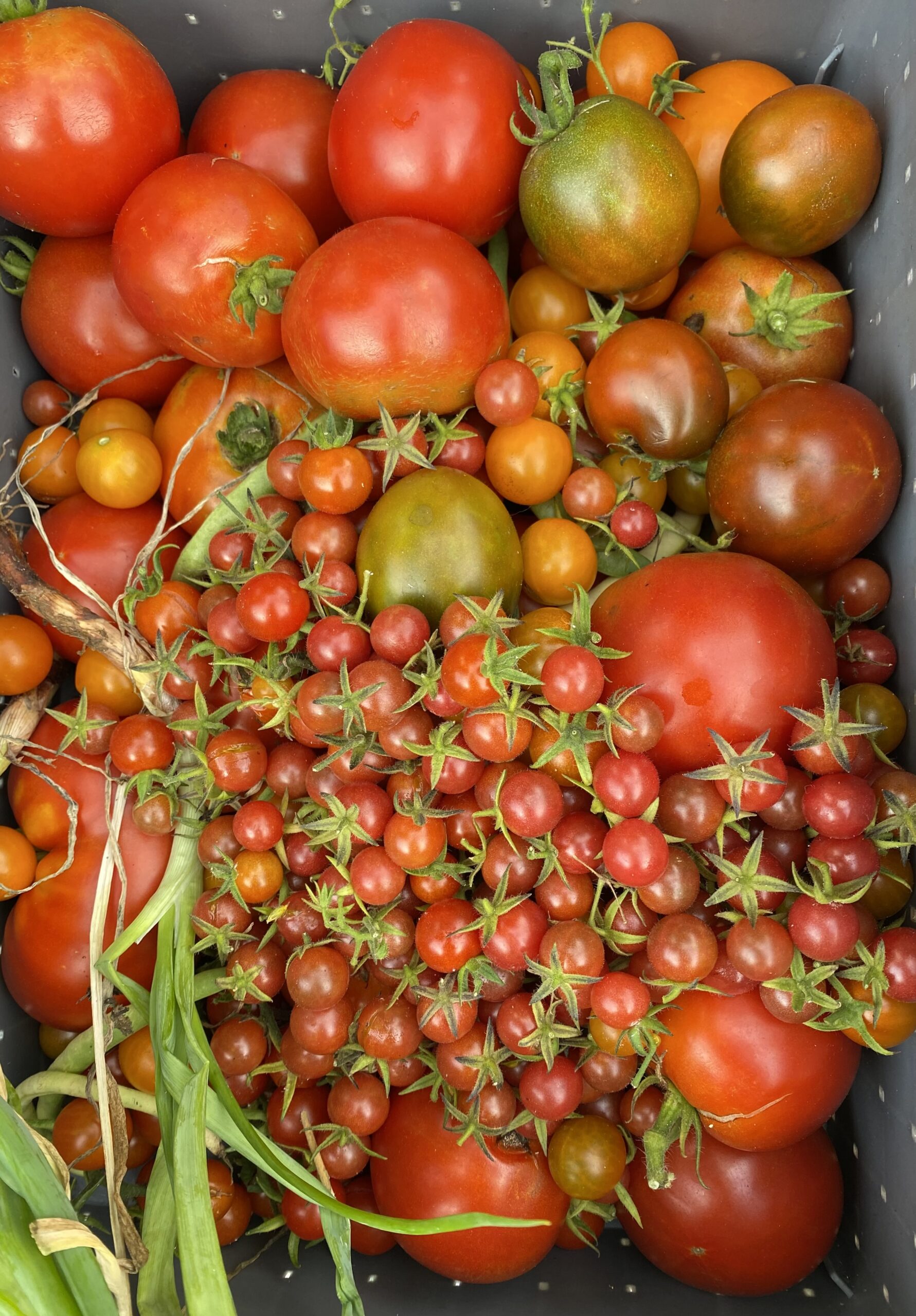
One week’s harvest
Tomatoes are a lot of work with new lessons to teach us each season. We think it’s well worth it – for the taste of a homegrown and the added thrill of sharing our bounty!
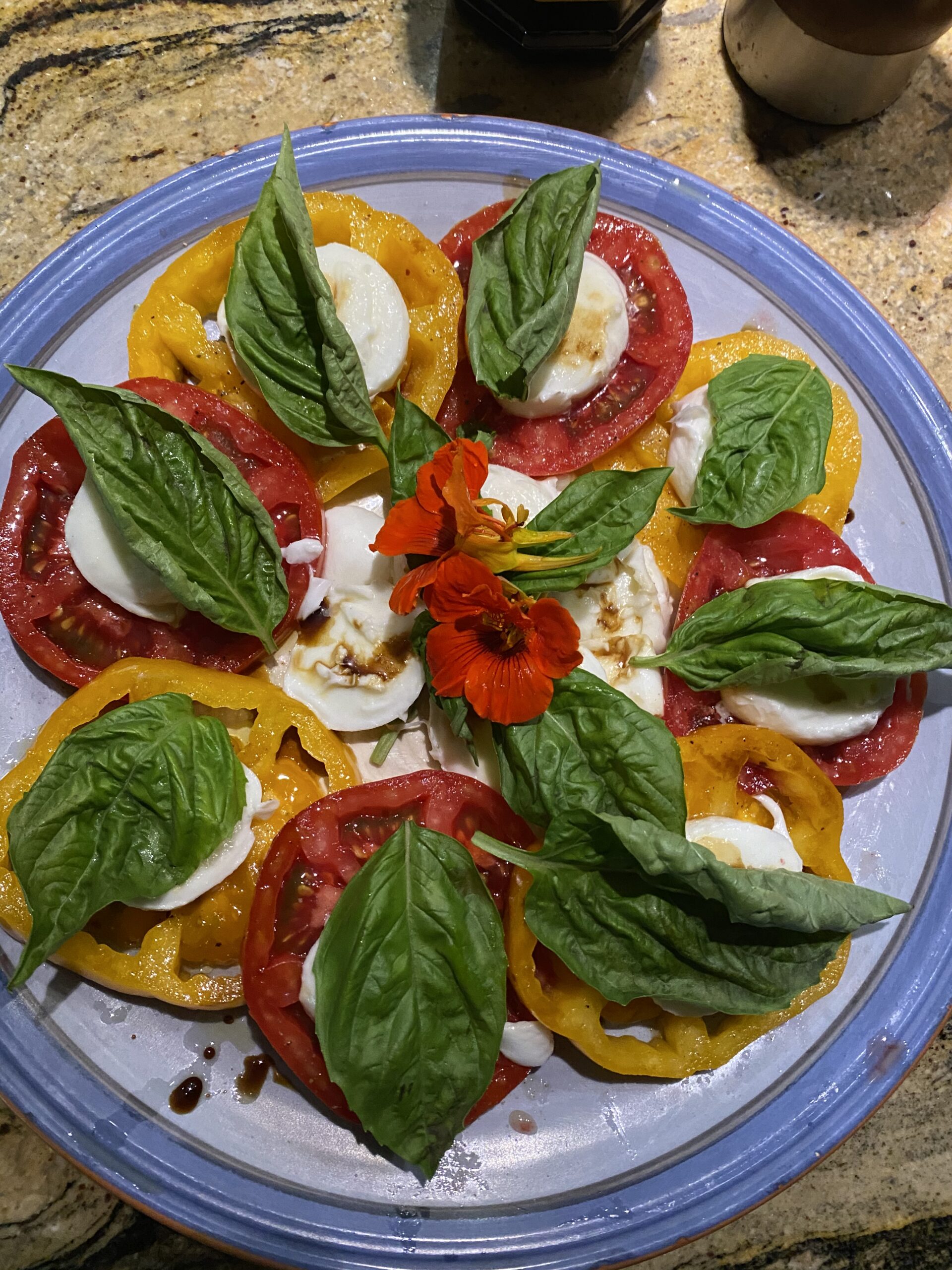
Fresh everything!
You Might Also Like...
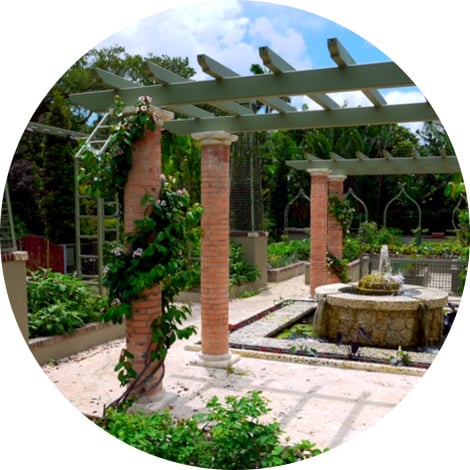
We are a small group of South Floridians who share a love of organic gardening, cooking and leading a healthy lifestyle. We garden together in Miami on a weekly basis year round, and enjoy the labor, harvest and feeling of community that this provides us. We are learning together what it means to grow food in South Florida, with our unique climate and seasons, which are so different than the rest of the country. This website is a venture in sharing information and resources relevant to gardening (and enjoying the harvest) in our South Florida environment. We hope you will find it useful!
